Publications
publications by categories in reversed chronological order. generated by jekyll-scholar.
2024
-
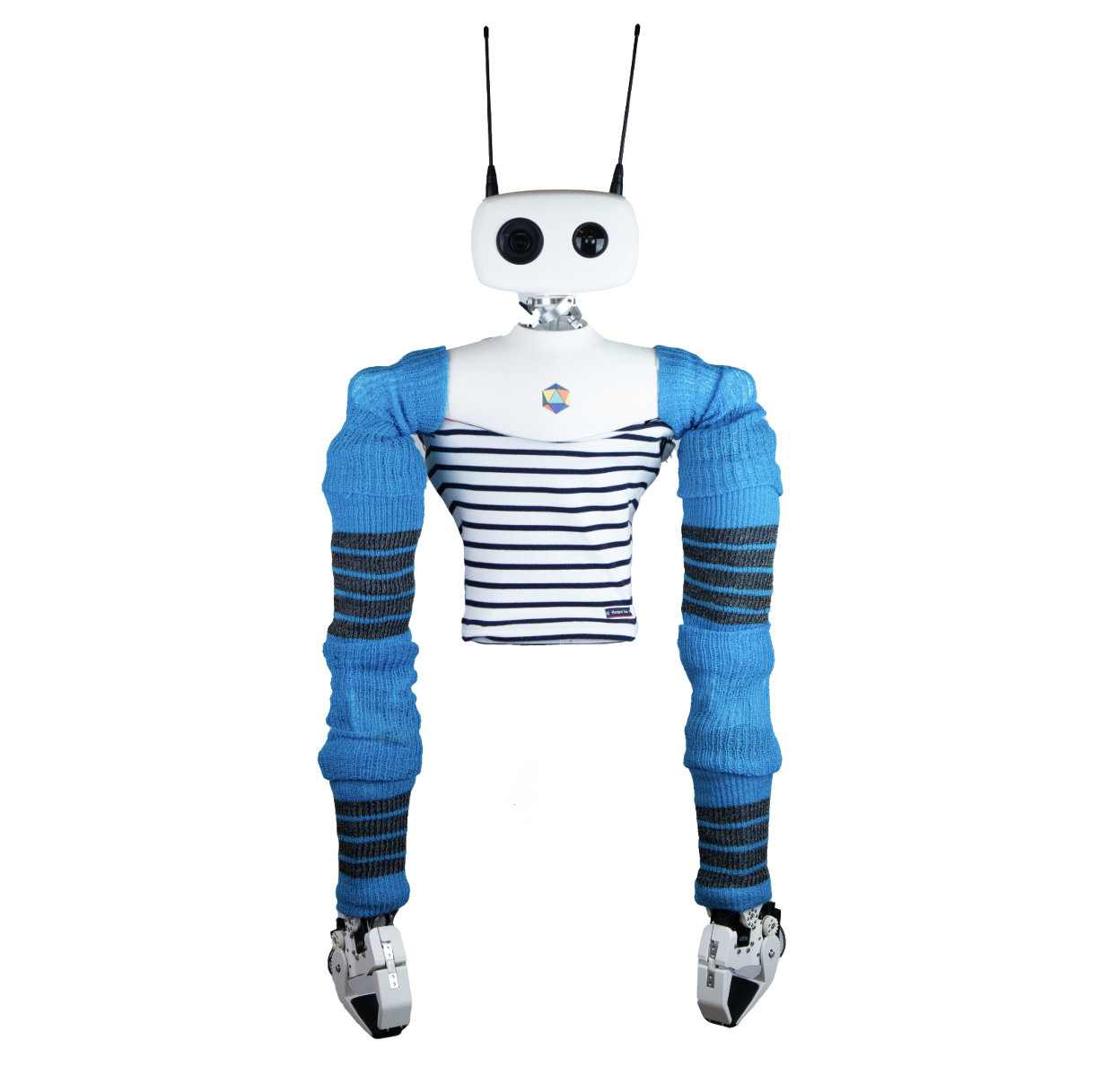 Social Gesture Recognition in spHRI: Leveraging Fabric-Based Tactile Sensing on Humanoid RobotsDakarai Crowder, Kojo Vandyck, Xiping Sun, and 2 more authorsUnder Review for ICRA 2025, Sep 2024
Social Gesture Recognition in spHRI: Leveraging Fabric-Based Tactile Sensing on Humanoid RobotsDakarai Crowder, Kojo Vandyck, Xiping Sun, and 2 more authorsUnder Review for ICRA 2025, Sep 2024Humans are able to convey different messages using only touch. Equipping robots with the ability to under- stand social touch adds another modality in which humans and robots can communicate. In this paper, we present a social gesture recognition system using a fabric-based, large-scale tactile sensor integrated onto the arms of a humanoid robot. We built a social gesture dataset using multiple participants and extracted temporal features for classification. By collecting real- world data on a humanoid robot, our system provides valuable insights into human-robot social touch, further advancing the development of spHRI systems for more natural and effective communication.
-
 A Modularized Design Approach for Vision-based Tactile SensorsArpit Agarwal, Mohammad Amin Mirzaee, Xiping Sun, and 1 more authorUnder Review for International Journal of Robotics Research (IJRR), Nov 2024
A Modularized Design Approach for Vision-based Tactile SensorsArpit Agarwal, Mohammad Amin Mirzaee, Xiping Sun, and 1 more authorUnder Review for International Journal of Robotics Research (IJRR), Nov 2024Vision-based tactile sensors have proven to be important for multiple robot perception and manipulation tasks. Those sensors are based on an internal optical system and an embedded camera to capture the deformation of the soft sensor surface inferring the high-resolution geometry of the objects in contact. However, customizing the sensors for different robot hands requires a tedious trial-and-error process to re-design the optical system. In this paper, we formulate this sensor design process as a systematic and objective-driven design problem and perform the design optimization with a physically accurate optical simulation. The method is based on modularizing and parameterizing the optical components of the sensor and designing four generalizable objective functions to evaluate the sensor. We implement the method with an interactive and easy-to-use toolbox called OptiSense Studio. With the toolbox, non-sensor experts can quickly optimize their sensor design in both forward and inverse ways following our predefined modules and steps. We demonstrate our system with three different GelSight sensors by quickly optimizing their initial design in simulation and transferring it to the real sensors. The toolbox will be public upon publication to foster the growth of the co-design of tactile sensors and robot structures.
-
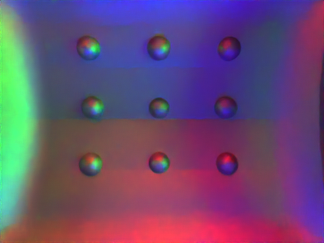 Interactive Design of GelSight-like Sensors with Objective-driven Parameter SelectionArpit Agarwal, Mohammad Amin Mirzaee, Xiping Sun, and 1 more authorIn ICRA @ 40, Sep 2024
Interactive Design of GelSight-like Sensors with Objective-driven Parameter SelectionArpit Agarwal, Mohammad Amin Mirzaee, Xiping Sun, and 1 more authorIn ICRA @ 40, Sep 2024Camera-based tactile sensors have shown great promise in dexterous manipulation and perception of object properties. However, the design process for vision-based tactile sensors (VBTS) is largely driven by domain experts through a trial-and-error process using real-world prototypes. In this work, we formulate the design process as a systematic and objective-driven design problem using physically accurate op- tical simulation. We introduce an interactive and easy-to- use design toolbox in Blender, OptiSense Studio. The toolbox consists of (1) a set of five modularized widgets to express optical elements with user-definable parameters; (2) a simulation panel for the visualization of tactile images; and (3) an optimization panel for automatic selection of sensor designs. To evaluate our design framework and toolbox, we quickly prototyped and improved a novel VBTS sensor, GelBelt. We fully design and optimize GelBelt in simulation and show the benefits with a real-world prototype.
-
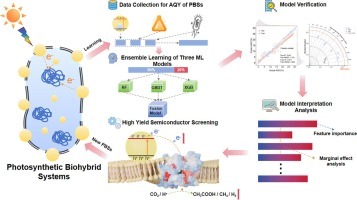 New Strategies for constructing and analyzing semiconductor photosynthetic biohybrid systems based on ensemble Machine learning Models: Visualizing complex mechanisms and yield predictionNing Hou, Yi Tong, Mingwei Zhou, and 3 more authorsBioresource Technology, Sep 2024
New Strategies for constructing and analyzing semiconductor photosynthetic biohybrid systems based on ensemble Machine learning Models: Visualizing complex mechanisms and yield predictionNing Hou, Yi Tong, Mingwei Zhou, and 3 more authorsBioresource Technology, Sep 2024Photosynthetic biohybrid systems (PBSs) composed of semiconductor-microbial hybrids provide a novel approach for converting light into chemical energy. However, comprehending the intricate interactions between materials and microbes that lead to PBSs with high apparent quantum yields (AQY) is challenging. Machine learning holds promise in predicting these interactions. To address this issue, this study employs ensemble learning (ESL) based on Random Forest, Gradient Boosting Decision Tree, and eXtreme Gradient Boosting to predict AQY of PBSs utilizing a dataset comprising 15 influential factors. The ESL model demonstrates exceptional accuracy and interpretability (R2 value of 0.927), offering insights into the impact of these factors on AQY while facilitating the selection of efficient semiconductors. Furthermore, this research propose that efficient charge carrier separation and transfer at the bio-abiotic interface are crucial for achieving high AQY levels. This research provides guidance for selecting semiconductors suitable for productive PBSs while elucidating mechanisms underlying their enhanced efficiency.
-
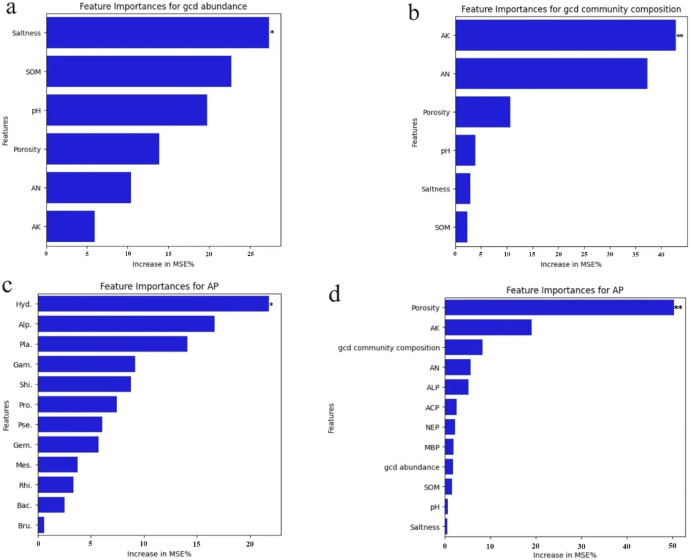 Biochar and wood vinegar altered the composition of inorganic phosphorus bacteria community in saline-alkali soils and promoted the bioavailability of phosphorusWei Zhao, Hongrui Zhao, Xiping Sun, and 4 more authorsJournal of Environmental Management, Sep 2024
Biochar and wood vinegar altered the composition of inorganic phosphorus bacteria community in saline-alkali soils and promoted the bioavailability of phosphorusWei Zhao, Hongrui Zhao, Xiping Sun, and 4 more authorsJournal of Environmental Management, Sep 2024As an important part of the ecosystem, saline-alkali soils are in urgent need of efficient and environmentally friendly soil conditioners. Biochar and wood vinegar are regarded as organic soil improvement and plant growth regulators to improve soil physicochemical properties and promote crop growth. However, the mechanism of how inorganic phosphorus bacteria increase phosphorus when biochar and wood vinegar applied to saline-alkali soils is not clear. Herein, the present study was designed to investigate the effects of biochar and wood vinegar with different rates on physicochemical properties of saline-alkali soils and inorganic phosphorus bacteria diversities and to discuss the mechanism of biochar and wood vinegar on available phosphorus by pot experiments. The application of biochar and wood vinegar exhibited an effect on the decrease in pH and salt contents and the increase in soil porosity, soil nutrients, and hundred-grain weight of rice. The 600 kg ha−1 biochar and 1800 kg ha−1 wood vinegar group showed the most significant increment in available phosphorus, alkaline phosphatase, acid phosphatase, and neutral phosphatase activities, with the increases of 49.24%, 40.35%, 48%, and 149%, respectively. The 600 kg ha−1 biochar and 1200 kg ha−1 wood vinegar group significantly enhanced microbial biomass phosphorus concentrations by 41.29%. Moreover, biochar and wood vinegar shifted inorganic phosphorus bacteria composition structure and promoted its diversities, more so at a higher rate of wood vinegar application. The dominant species of inorganic phosphorus bacteria were Proteobacteria, Gammaproteobacteria, Alphaproteobacteria, Pseudomonas, and Rhizobium in saline-alkali soils. The Alphaproteobacteria and Hydrogenophaga were the key microorganisms reducing pH and salt contents and increasing available phosphorus contents in saline-alkali soils. In conclusion, the application of biochar and wood vinegar was a useful strategy to improve saline-alkali soils
-
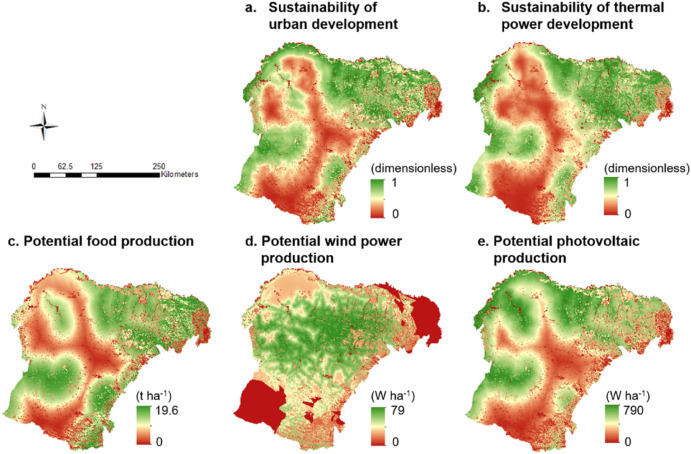 Framework of land use planning for an energy producing city of Northwest China based on water-energy-food nexusZhou Fang, Shi Xue, Changgao Cheng, and 8 more authorsJournal of Cleaner Production, Sep 2024
Framework of land use planning for an energy producing city of Northwest China based on water-energy-food nexusZhou Fang, Shi Xue, Changgao Cheng, and 8 more authorsJournal of Cleaner Production, Sep 2024The development of cities and their industries is constrained by the water-energy-food nexus (WEF nexus) formed under certain biophysical conditions. Urban-scale WEF nexus research is very different from macroscale (global or national) research. There is a need for quantitative optimization of several economic sectors, as well as spatial heterogeneity of resource endowments, to develop policies that are distinctive for different levels of endowments. Currently, China is implementing Territorial Spatial Planning (TSP) at all administrative levels throughout the country. Its theoretical basis is to realize the overall management of urban ecological protection land, urban expansion, and industrial growth by measuring the resource carrying capacity and land development suitability of each plot. This provides an opportunity to explore the interconnections between WEF nexus at urban scale by examining the wide range of urban resource availability. Here, we propose the WEF-TSP framework, which helps to realize the multi-objective development needs of regional ecological protection, urban expansion, agricultural development, and energy production in a certain city and provides a decision-making basis for future urban land spatial planning. Ordos, a city in China recognized for its significant energy reserves, has been selected as the subject of a case study. Combined with the spatial heterogeneity of Ordos’s resource endowment and focusing on the strong constraints of water resources and ecological protection, this study explores the urban land spatial layout scheme of Ordos in 2030 under different energy development scenarios. It can also provide a reference for other cities in China and even the world to study the spatial layout of urban land use and industrial development based on the WEF nexus.